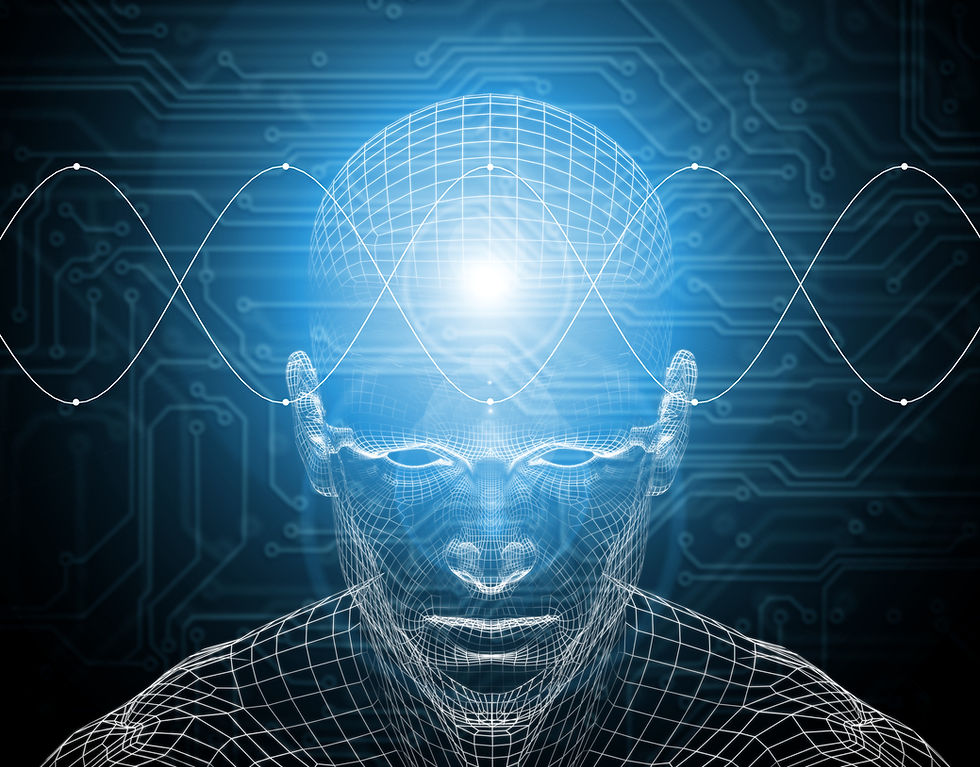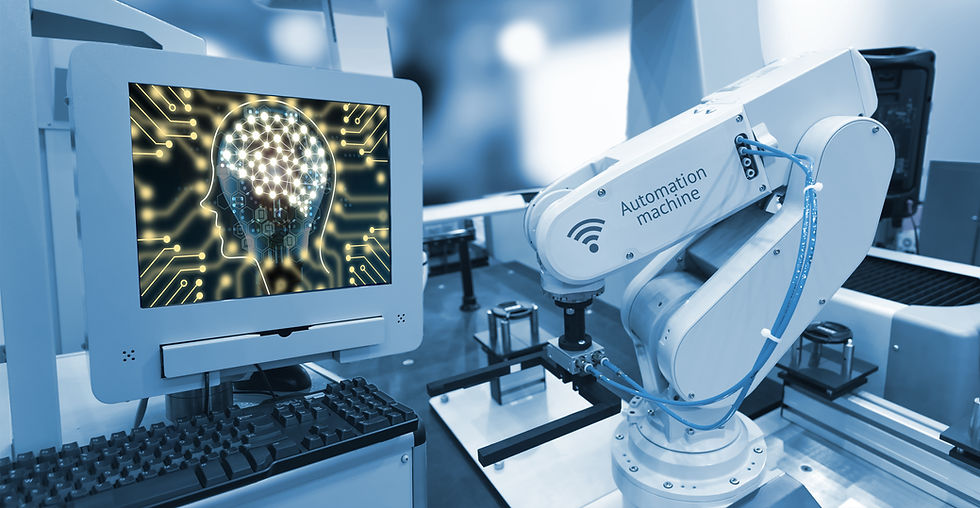Chatbot vs AI: What's the Difference?
- JUST JOLLY SERVICE

- Jan 11
- 4 min read

In recent years, the terms "chatbot" and "artificial intelligence" (AI) have become buzzwords in the tech world. These terms are often used interchangeably, but they represent different concepts. While chatbots and AI may work together, they have distinct roles and capabilities. In this blog, we’ll break down the differences between a chatbot and AI, explaining what each term means, how they function, and how they are used in various industries.
What is a Chatbot?
A chatbot is a software application designed to simulate conversation with human users. Chatbots are typically used in messaging apps, websites, and customer service platforms to assist users with queries, provide information, or carry out tasks. The chatbot's primary function is to communicate with users via text or voice, often acting as the first point of contact in customer service.
There are two types of chatbots:
Rule-based Chatbots (Simple Chatbots): These chatbots follow predefined scripts or patterns. They rely on if-then logic to respond to user inputs. Rule-based chatbots are limited to the scope of their programming and can only handle specific queries that match their scripted responses.
AI-powered Chatbots (Intelligent Chatbots): These are more advanced chatbots that leverage natural language processing (NLP) and machine learning to understand and respond to human queries more naturally. They learn from previous conversations and can improve their responses over time. Examples include chatbots like Siri, Alexa, or the ones integrated into customer service systems that can handle more complex questions.
Key Features of a Chatbot:
Automated Conversations: Chatbots can interact with users in real-time, providing answers to questions or assisting with tasks like booking tickets, placing orders, etc.
Predefined Responses: Rule-based chatbots work by matching user input to a set of predetermined responses.
Task-oriented: Many chatbots are designed to perform specific tasks, such as answering frequently asked questions (FAQs) or booking appointments.
What is Artificial Intelligence (AI)?

Artificial intelligence (AI), on the other hand, is a broader field of computer science that aims to create machines or software capable of performing tasks that would typically require human intelligence. These tasks include learning from experience, recognizing patterns, making decisions, and solving problems. AI goes far beyond simple rule-based systems and can handle complex data-driven tasks.
AI systems can be divided into two main categories:
Narrow AI (Weak AI): This refers to AI that is trained to perform a specific task, like recognizing faces, driving cars, or analyzing medical images. Narrow AI can handle tasks in a specialized domain but doesn’t have general intelligence.
General AI (Strong AI): This is the theoretical AI that can perform any intellectual task that a human being can do. General AI is still largely speculative and not yet achievable.
Key Features of AI:
Machine Learning (ML): Machine learning, a subset of AI, allows systems to learn from data and improve without explicit programming. For example, AI can be used to predict future trends, detect fraud, or analyze patterns.
Natural Language Processing (NLP): AI systems like chatbots use NLP to understand and generate human language. NLP involves syntactic and semantic analysis, context understanding, and response generation.
Automation: AI automates complex processes that go beyond simple tasks, such as predictive analytics, medical diagnosis, or even autonomous driving.
The Key Differences Between Chatbots and AI

Scope of Functionality:
Chatbots: Limited to handling predefined tasks such as answering questions, booking appointments, or providing support. They can either be rule-based or AI-powered, but they are mainly focused on communication.
AI: Encompasses a wide range of technologies and applications designed to mimic human intelligence in complex tasks. AI systems can process data, recognize patterns, make decisions, and improve performance over time.
Complexity:
Chatbots: Even AI-powered chatbots are relatively simple compared to full-fledged AI systems. They are designed to handle specific queries or tasks and are not capable of learning beyond their programming in some cases.
AI: AI is much more complex, with the ability to learn from data (machine learning), perform deep analysis, and solve intricate problems.
Learning Capabilities:
Chatbots: Basic rule-based chatbots do not learn from interactions, while AI-powered chatbots can improve over time based on data and user interactions.
AI: Most AI systems are designed to learn from data, improve their predictions, and even adapt their behavior. For example, AI models like GPT-3 can generate human-like text and improve over time through reinforcement learning.
Use Cases:
Chatbots: Typically used in customer service, marketing, and support. Chatbots help businesses automate communication with customers, answer FAQs, and even engage users in marketing campaigns.
AI: AI has broader applications, including predictive analytics, recommendation systems, healthcare diagnostics, autonomous driving, fraud detection, and much more.
How Chatbots Use AI:

While chatbots and AI are different, modern chatbots often use AI to enhance their capabilities. AI-powered chatbots leverage natural language processing (NLP) and machine learning to understand and respond to users more naturally. By analyzing vast amounts of data, these chatbots can answer complex questions, offer product recommendations, and even simulate human-like conversations.
For example, virtual assistants like Amazon’s Alexa or Google Assistant use AI to understand speech, recognize context, and perform a wide range of tasks, such as controlling smart devices, setting reminders, or retrieving information.
Why Both Are Important in Modern Business:
Chatbots help businesses automate communication with users, handle customer inquiries, and improve customer satisfaction. By using chatbots, companies can provide immediate support, enhance user experience, and reduce operational costs.
AI, on the other hand, drives innovation and intelligence in industries like healthcare, finance, logistics, and more. AI-powered systems can make complex decisions, predict trends, and optimize processes that would be impossible for humans to handle manually.
Conclusion: Chatbot vs AI
While a chatbot is primarily a communication tool that automates interactions, AI refers to the broader concept of creating machines that simulate human intelligence. AI can power chatbots, enabling them to handle more complex queries, learn from interactions, and improve over time. Both chatbots and AI are integral in driving automation, improving customer experience, and solving complex problems.
By understanding the distinction between a chatbot and AI, businesses can better leverage these technologies to streamline operations and enhance their offerings. Whether it’s implementing a simple chatbot to answer customer questions or deploying AI to analyze big data and make smarter decisions, both technologies are shaping the future of business and technology.







Just Jolly AI isn't just an AI it brings apperance like humans and make suitable solution for your problems.